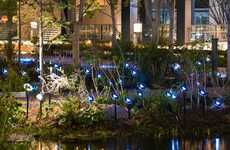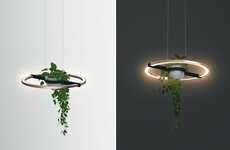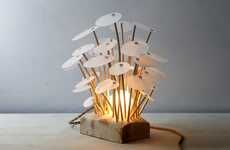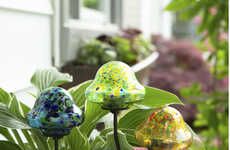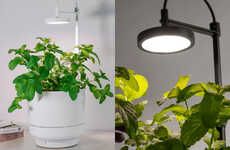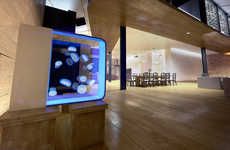
Bioglow's Luminescent Foliage Could Encourage Electricity-Free Living Rooms
Meghan Young — January 11, 2014 — Tech
References: bioglowtech & psfk
Although people might think they have encountered light producing plants before, they were most likely fooled by the application of dyes, chemicals or UV lights. That is because it is only today that the world’s first autoluminescent plant has been created.
Developed by Biotech company Bioglow, which was informed by the work of molecular biologist Dr. Alexander Krichevsky whose work was first published in the international peer-reviewed science journal PLOS One back in 2010, the light producing plants uses the same principle found in fireflies and other luminous organisms. The ability to emit light is encoded on a cellular level.
A collaboration with technology entrepreneur Tal Eidelberg, Bioglow's light producing plants could become a great alternative to candles for electricity-free living spaces.
Developed by Biotech company Bioglow, which was informed by the work of molecular biologist Dr. Alexander Krichevsky whose work was first published in the international peer-reviewed science journal PLOS One back in 2010, the light producing plants uses the same principle found in fireflies and other luminous organisms. The ability to emit light is encoded on a cellular level.
A collaboration with technology entrepreneur Tal Eidelberg, Bioglow's light producing plants could become a great alternative to candles for electricity-free living spaces.
Trend Themes
1. Autoluminescent Plants - Disruptive innovation opportunity: Develop new applications for autoluminescent plants, such as energy-efficient lighting solutions for indoor spaces.
2. Bioengineered Lighting - Disruptive innovation opportunity: Explore the potential of bioengineered lighting to revolutionize the way we illuminate our surroundings without relying on electricity.
3. Sustainable Illumination - Disruptive innovation opportunity: Create sustainable illumination systems using light producing plants, enabling electricity-free living rooms and reducing energy consumption.
Industry Implications
1. Biotechnology - Disruptive innovation opportunity: Utilize biotechnology to advance the development of autoluminescent plants and expand their range of applications.
2. Interior Design - Disruptive innovation opportunity: Integrate light producing plants into interior design concepts to offer eco-friendly and unique lighting solutions for homes and commercial spaces.
3. Environmental Technology - Disruptive innovation opportunity: Drive the adoption of light producing plants as a form of environmental technology, providing sustainable alternatives to traditional lighting systems.
5
Score
Popularity
Activity
Freshness














